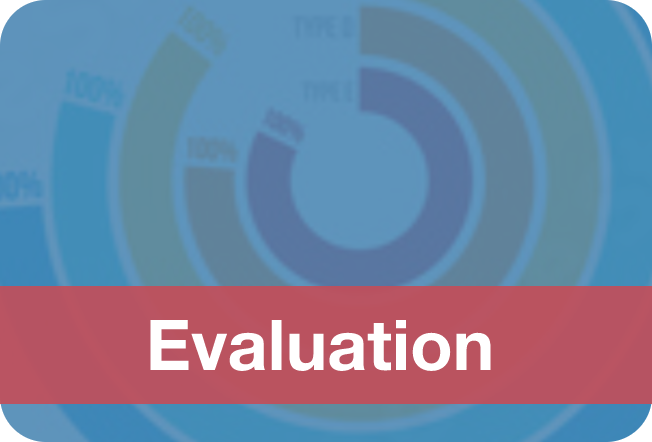Pathways – Streamlining referrals, improving patient care
What is Pathways?
Pathways is a trusted online directory of healthcare providers, services, and clinical resources that supports clinicians in British Columbia. Pathways supports delivery of timely, high quality patient care, and helps reduce clinicians' administrative burden contributing to a stronger health system.
Pathways also contains directories for patients so that they can find appropriate medical care PathwaysMedicalCare.ca provides patients with a quick summary of data about their primary care provider, including information about virtual care options. Our Community Service Directory helps the public quickly find a wide variety of health authority or community servicer in your local area.
For more information, review this backgrounder on Pathways.
Who we are
Pathways started more than a decade ago as a small, grassroots project developed by physicians in the Fraser Northwest Division of Family Practice. Today, it has since grown into an independent not-for-profit society serving all of BC and even other provinces. Despite this growth it remains grounded in its grassroots commitment to community-driven innovation and collaboration.
Funding for Pathways comes from a unique collaboration between Doctors of BC and the BC Ministry of Health. Guidance and input are provided by the Family Practice Services Committee and all Joint Collaborative Committees. Divisions of Family Practice, groups of physicians who work at the community-level to improve primary care, also provide funding and are important partners.
What we do
For Physicians and other Health Care Providers
 |
Consultant, Clinic and Service Directory - This log-in directory provides rich comprehensive data to support clinicians in referring patients to the most appropriate consultant or clinic. Pathways includes wait times for each consultant, which consultants provide virtual care services, and it also identifies which conditions or procedures consultants will see on referral, so patients are referred to the right consultant the first time. |
 |
Patient Information and Clinical Tools - Pathways actively curates a collection of patient information from trusted sources that can even be emailed to patients right from Pathways. Pathways also works with GPAC, UBC CPD, Shared Care and other partners to curate a collection of trusted clinical tools, including care pathways/algorithms. |
 |
Forms - Physicians have access to updated forms and clinical resources at point-of-care, which can be e-mailed directly to patients by the physician or health care provider. |
For Patients and Health Care Providers
 |
Pathways Medical Care Directory - This public directory was created to help patients quickly find information about their provider, or to find care if they do not have one, and lets expectant parents find available maternity care providers in their local area. |
 |
Community Service Directory - This public directory helps patients and health care navigators find and access community services & Health Authority services in their local area. Supports include resource material for mental health and substance use, postpartum, public health, seniors, and those new to a region or new to Canada. |
How to Join
Role based access to Pathways is available at no cost to the following groups:
|
|
Different levels of access are available based on an individual's role and whether they are directly involved in making patient referrals.
How to request access
- Family physicians or their Medical Office Assistants should request access through their local Division of Family Practice.
- Consultant specialists and their Medical Office Assistants can request access here by selecting "Request access" under "Clinician Login".
- Nurse practitioners can request access through NNPBC.
- All other requests can be made here by selecting "Request access" under "Clinician Login".
Benefits of Using Pathways
Physicians and other health care providers:
Reduced administrative burden and increased supports to deliver more timely care for patients, including:
- Easier and faster to identify appropriate clinics and services for patients.
- Easy, quick access at point-of-care to evidence-based clinician tools and information.
- Ability to email information/patient resources directly to patients while in the exam room.
- Opportunity for new specialists to quickly build a patient panel, or communicate changes to their practice to family physicians.
- Specialists do not have to self-maintain their clinic data on the Pathways system. The Pathways team provides support and streamlines the process for consultants and their staff. This reduces burden on clinicians and improves the data quality of the directory.
Patients:
Convenient access to information supporting timely, quality care:
- Referrals to the right consultant specialist or clinic/service to meet patients’ needs, when they need it and where they live.
- Patient information, resources, updates on referrals sent directly to patient from the doctors’ office.
- Public-facing directories to help access medical care and community services close to home.
The health care system:
A trusted source of quality data and knowledge-sharing:
- Provides trusted source of data provincially and at community level to guide planning and decision-making to meet the real needs of patients in their communities.
- Shares knowledge in a multi-dimensional way to support delivery of timely, quality patient care across the health care system.
- Supports strong collaboration and relationships. When we work together, we grow together, and have a better chance to succeed.
- Reduces administrative burden to physicians and other health care providers, reducing stress and streamlining workflow.
Evaluation Results
Following the initial pilot, a comprehensive evaluation of Pathways' impact was conducted. See the summary below.

Your Stories
Hoda Abougareeb – Pathways is “a work of art!”
Hoda Abougareeb is a medical office assistant who uses Pathways daily to help her clinic run smoothly. Whether finding up-to-date service details or using new search tools, she says Pathways is always open on her screen.
“I find the new search very useful, especially with the AI summary and links contained within. It is indeed a huge enhancement to the search,” Hoda shared. “In general, the updates to color coding and filters when searching are very convenient. I also found the explanatory video very informative and to the point.”
Her enthusiasm for the platform is clear:
“Who doesn’t open Pathways every day to make their day easier? It is a work of art!”
For Hoda, Pathways means being supported and having the right information at her fingertips — simplifying how she helps clinicians and, ultimately, patients.
Dr. Michele Thomasse - How Pathways strengthens the patient-provider experience
Dr. Michele Thomasse is helping to make a difference in Kelowna, BC. Since arriving from Ontario, where she started practicing in 1990, Dr. Thomasse has run a family practice, as well as worked at an outreach clinic where she provides primary care to disenfranchised British Columbians, including people struggling with addictions, mental health issues, and homelessness. She is also part of the sexual assault response team.
She loves being a family physician. “I’m a people person, I like interacting with people, I like the longitudinal aspect and variety of family practice.” However, she’s the first to admit that she is not very tech savvy. Like many other physicians, she acknowledges the huge breadth of information available online, but finds it challenging to access trusted information in a timely and straightforward way.
At a meeting of her Division of Family Practice, Dr. Thomasse learned about Pathways, and hasn’t looked back. In the increasingly complex world of medicine, Pathways helps physicians and other care providers navigate quickly and easily through the health care system, providing a range of trusted supports including provider directories, clinical tools and algorithms to help with diagnoses and developing treatment plans, and patient information.
Dr. Thomasse uses Pathways mainly to support herself in providing clinical care, and especially to send patients information and resources.
"If I have a patient with a new diagnosis of ADHD, I can access patient information that I know has been reviewed by physicians and is reliable. Providing the information to patients is often a jumping-off point to deeper discussion and a common understanding about treatment plans.”
And it reduces the chances they will peruse websites that are not credible and can be misleading. The best part is, it’s all available in one spot!
"Sometimes, it’s not appropriate or realistic to spend a longtime researching a topic. I want a resource that I can look at in the moment, when I’m with a patient and trying to figure out the best path for them, doing that in real time.”
Dr. Thomasse’s story is just one of many that show how Pathways is significantly reducing administrative burden, making the practice of medicine better for those on the front lines, and improving the quality of patient care. Learn more here.
Dr. Karin Kausky - How Pathways reduces physician burden and improves well-being
Dr. Karin Kausky starts her day the same way when she arrives at her clinic in Whistler, BC. She opens up her EMR and then immediately logs into Pathways.
“Pathways understands how I work, understands physician workflow, and it supports provider wellness, it is one tool that truly decreases administrative burden."
Pathways is an online resource that provides physicians and other care providers in BC with the latest in clinical algorithms and tools to support diagnoses and development of treatment plan, patient information, forms, clinical directories, and much more. In the increasingly complex world of medicine, it helps physicians and other care providers easily navigate to find the information they need, when they need it – all in one place. Dr. Kausky also appreciates that all the information is vetted by physicians, so users know it is credible, unbiased, and up to date.
Dr. Kausky often uses Pathways at the point-of-care to support her in developing treatment plans. She goes into clinical care pathways that provide critical information on investigations, therapeutics, and referrals, that help her make decisions around patient care. And, she often reviews treatment plans with patients. “If we go through it together, and patients see that we haven’t exhausted all of our options, they’re happy to keep going with a treatment plan, sometimes avoiding costly referrals and other procedures.” Dr. Kausky also appreciates the easy access Pathways provides to forms:
“All the forms I need are in there – I can go in there in one place to access them at point of care, and immediately send them to my patient. And I know they are up to date.”
She finds this particularly useful in pre-natal and maternity care. “I can go in there in place to access all the referrals for a pre-natal visit, it also has patient information I can send them covering first, second and third-trimester.” Dr. Kausky’s story is just one of many that show how Pathways is significantly reducing administrative burden, making the practice of medicine better for those on the front lines, and improving the quality of patient care. Learn more here.
Pathways journey - A grassroots success story helps thousands of care providers in BC
Dan Zollman still remembers the day he sat down with the developer of the very first iteration of Pathways. He had heard a lot of buzz from physicians about this new technology developed by the Fraser Northwest Division of Family Practice to help meet the needs of family physicians who were struggling to find specialist clinical services in their communities.
Dan admits he was skeptical heading into this first meeting. “We met at a coffee shop on Main Street in Vancouver with a terrible wifi connection,” recalls Don. “When I opened my laptop and checked out the site, I was blown away. I saw an amazing platform that would refine searches and provide responses in seconds. It had a fantastic user interface and was totally easy to understand, completely intuitive.”
This local solution spread from division to division, at which point Doctors of BC and the BC Ministry of Health provided funding to expand province-wide. Today, Pathways is a provincial nonprofit that provides a wide range of information for doctors and other care providers to help them navigate the increasingly complex world of medicine - all with one login. In addition to a specialist directory, the unique online resource provides:
- Clinical tools and algorithms that help with diagnoses and development of treatment plans,
- Access to forms and information for patients that can be sent directly at the point-of-care, and
- A public directory where providers and patients can find and access community services such as mental health and substance use services.
These and other supports help deliver timely, quality patient care, reduce physicians’ administrative burden, grow team-based care, and ultimately build a stronger health care system.









